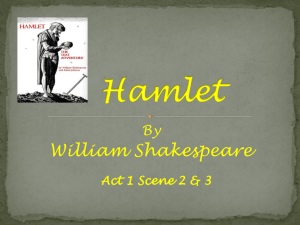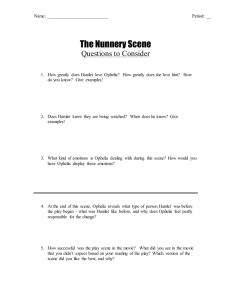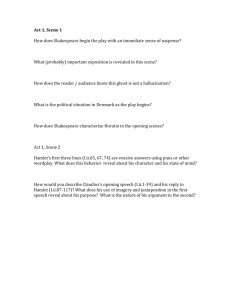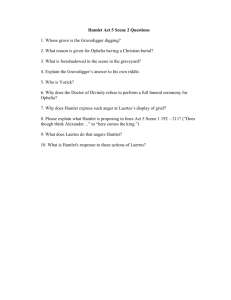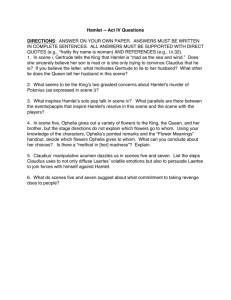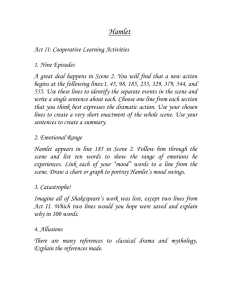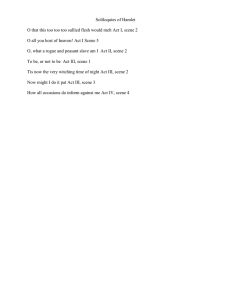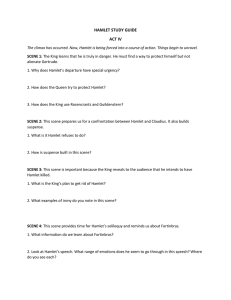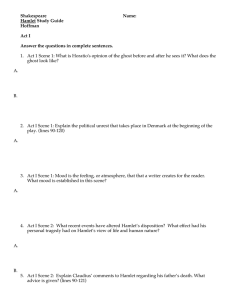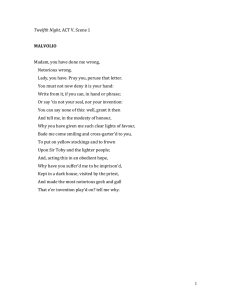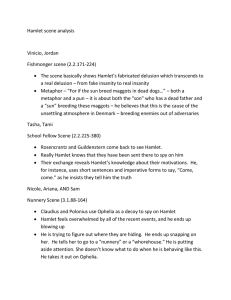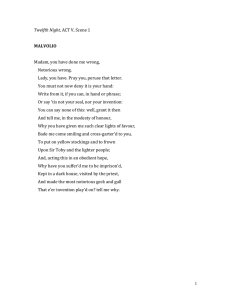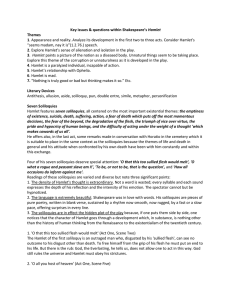Martyn Comp/Lit 12 Hamlet 3.1 Reading Questions THE NUNNERY
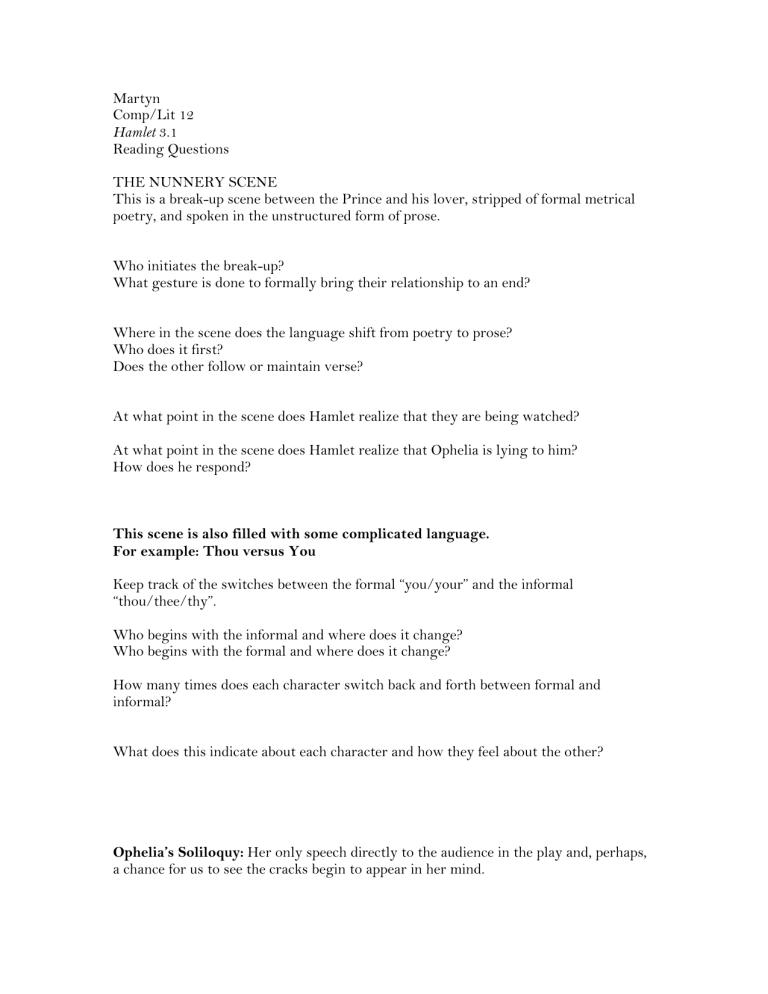
Martyn
Comp/Lit 12
Hamlet 3.1
Reading Questions
THE NUNNERY SCENE
This is a break-up scene between the Prince and his lover, stripped of formal metrical poetry, and spoken in the unstructured form of prose.
Who initiates the break-up?
What gesture is done to formally bring their relationship to an end?
Where in the scene does the language shift from poetry to prose?
Who does it first?
Does the other follow or maintain verse?
At what point in the scene does Hamlet realize that they are being watched?
At what point in the scene does Hamlet realize that Ophelia is lying to him?
How does he respond?
This scene is also filled with some complicated language.
For example: Thou versus You
Keep track of the switches between the formal “you/your” and the informal
“thou/thee/thy”.
Who begins with the informal and where does it change?
Who begins with the formal and where does it change?
How many times does each character switch back and forth between formal and informal?
What does this indicate about each character and how they feel about the other?
Ophelia’s Soliloquy: Her only speech directly to the audience in the play and, perhaps, a chance for us to see the cracks begin to appear in her mind.
12 lines, 4 thoughts, two instances of the emotion word O, 1 mid-line ending, which – considering what happens to her later – ends fittingly with the word ecstasy (madness).
After which there’s a nice gap in the meter in an otherwise metrically regular speech.
O, what a noble mind is here o'erthrown!
The courtier's, soldier's, scholar's, eye, tongue, sword;
The expectancy and rose of the fair state,
The glass of fashion and the mould of form,
The observed of all observers, quite, quite down!
And I, of ladies most deject and wretched,
That suck'd the honey of his music vows,
Now see that noble and most sovereign reason,
Like sweet bells jangled, out of tune and harsh;
That unmatch'd form and feature of blown youth
Blasted with ecstasy: O, woe is me,
To have seen what I have seen, see what I see!
Repeat three of the attributes that Ophelia gives to Hamlet.
What is she asking the audience to consider about Hamlet? How does she describe his current condition?
